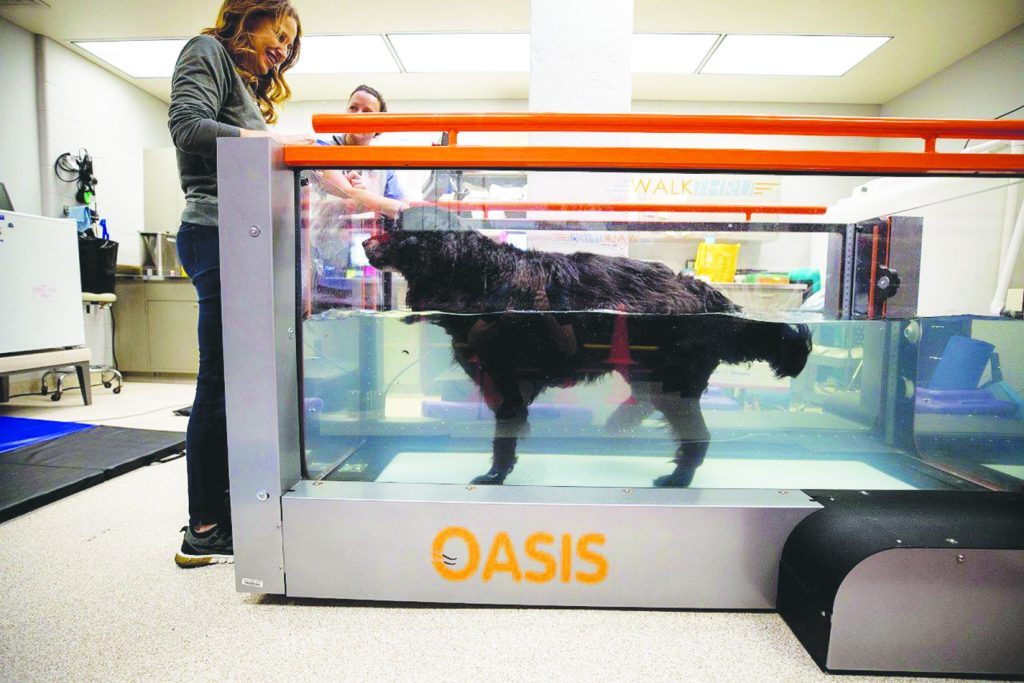
When Sophie, the Newfoundland/golden retriever mix, suddenly could not stand on her hind leg, owner Angela McCoy Williams of Giles County sought emergency services at the Virginia-Maryland College of Veterinary Medicine’s Veterinary Teaching Hospital. The veterinary staff found that Sophie tore her cranial cruciate ligament (CCL) in her rear right leg.
This was Sophie’s second CCL tear. The CCL connects the bones in the knee joint and is similar to the anterior cruciate ligament (ACL) in humans. We typically think of ACL tears as sports injuries, but dogs usually tear their CCL because of degeneration.
In 2019, Sophie tore her left CCL, and over time, her body built up enough scar tissue to compensate for the loss of stability. But when she tore the right CCL, the old injury meant that her left leg simply wasn’t strong enough to hold her up.
Surgery, the typical treatment, was not going to work for Sophie. It would require confinement as she recuperated, and crating simply was not an option. Besides, surgery would be extra stressful given her advanced age and skin problems would increase her surgical and anesthetic risks.
“We talked to the owner about the spectrum of care we could offer Sophie. A CCL tear is not uncommon, but it can be a huge quality of life issue for older dogs, so it’s nice to have different things we can offer, not just one type of pain medication,” said Jenny Marin, clinical assistant professor of community practice at the teaching hospital.
Thanks to the teaching hospital’s Rehabilitation Service, Sophie can recover from her torn CCL without surgical intervention.
“Surgery is more expensive than rehab, and surgery doesn’t mean it won’t happen again. I would rather build up her strength and her muscle and give her what time she has left to be comfortable,” said Williams.
Sophie comes to the Rehabilitation Service twice a week for laser therapy and underwater treadmill sessions with certified canine rehabilitation practitioner Flori Bliss.
“We’re taking the multimodal approach we typically take for rehab patients. Before her right leg injury, she wasn’t on any kind of pain management, so that was the first thing to do. She’s on joint supplements, anti-inflammatories, and now she’s on a new diet. We’re coming at it from a lot of different angles,” said Bliss.
Sophie loves water, so the underwater treadmill is her favorite rehabilitation activity.
Sophie’s story underscores the importance of the spectrum of care, the concept that the “gold standard” doesn’t suit every case. An animal and a client’s circumstances may require creative problem solving. Veterinarians need flexibility to use a variety of options to make the best treatment for pets and their owners alike.
For Sophie, the spectrum of care means she can undergo rehabilitation instead of surgery.
“It’s harder because she has had two tears, but I’m confident she will improve,” said Marin.


